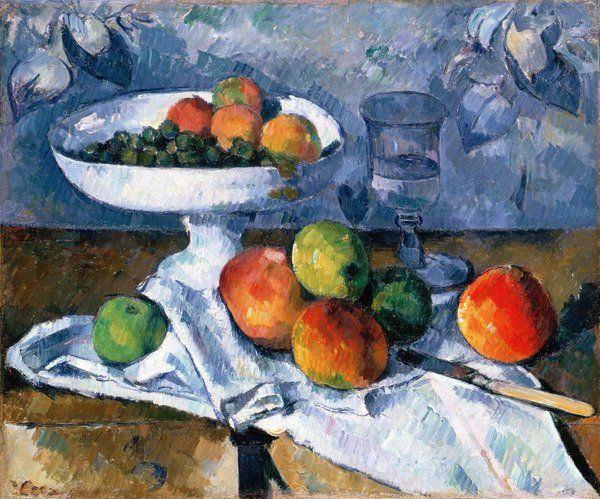 |
| Table in Cezanne's studio, Aix-en-Provence |
 |
| Paul Cezanne, Still Life with Fruit Dish |
Faithful readers know that I am fascinated by painters' studios. I suspect that even non-painters share this fascination. It's especially intriguing to visit "preserved" studios of some of the greats from decades (or centuries!) past. If you know an artist's body of work, seeing his or her studio brings a shock of the familiar. What art lover could possibly visit the studio of Cezanne in Aix-en-Provence (seen above), and not recognize objects from his wonderful still lifes?
 |
| Paul Cezanne, "Still Life with Plaster Cupid" |
I'm closing with a list of artists' studios I have enjoyed visiting, and some that are on my wish list. If you share the fascination, check them out below. Even those that are reconstructed (noted below) are very evocative. Each name below is linked to more detailed info, if you care to click on it. Happy touring!
PARIS: Alberto Giacometti (reconstruction)
Antoine Bourdelle (original)
Jean-Jacques Henner (reconstruction)
BOLOGNA: Giorgio Morandi (original)
MADRID: Joaquin Sorolla (original)
AMSTERDAM: Rembrandt (virtual tour here) (reconstruction of interior, in original sturcture)










